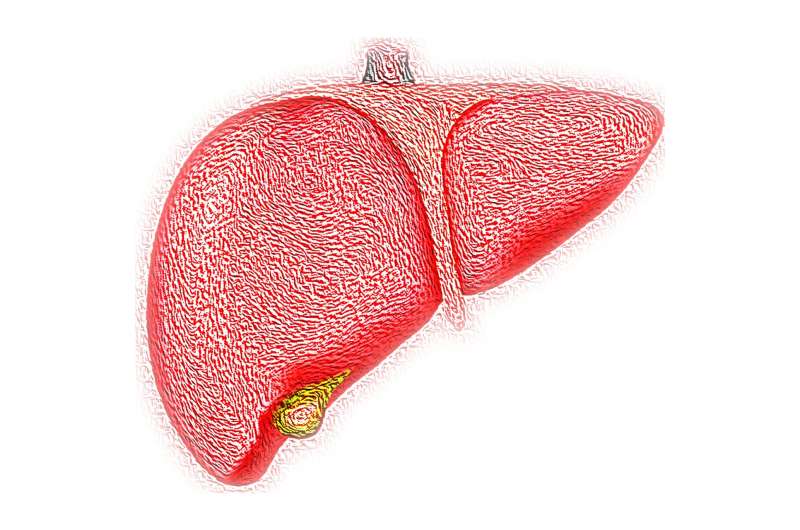This article has been reviewed according to Science X's editorial process and policies. Editors have highlighted the following attributes while ensuring the content's credibility:
fact-checked
peer-reviewed publication
trusted source
proofread
Protein that drives liver damage could be a target for treatment

A severe form of fatty liver disease called nonalcoholic steatohepatitis (NASH) is the leading cause of liver transplantation, but there are few treatment options and currently no medications. In a new study, Yale researchers have identified a driver of liver damage that occurs in NASH and which may open new treatment options in the future.
The study was published Sept. 27 in Science Translational Medicine.
Nonalcoholic fatty liver disease is the most common chronic liver disease worldwide. It's a condition in which excess fat builds up in the liver and is more often diagnosed in people with obesity. If left untreated, it can develop into the more severe NASH or cancer.
As obesity rates have risen over the past few decades, so have NASH diagnoses. An estimated 5% of U.S. adults have NASH, which is marked by liver damage and inflammation that can cause fibrosis, or scarring of the liver. NASH is now the number one indication for liver transplantation in the United States. Reducing liver fibrosis may significantly reduce the need for this procedure.
"Several hundred thousand people per year may need a liver transplant because of NASH," said Dr. Dean Yimlamai, an assistant professor of pediatrics at Yale School of Medicine and senior author of the study. "Most will not be able to get one, so we're looking for other ways to reduce the burden of disease."
In previous research on both mice and humans, Yale scientists and others have found that a protein called CYR61 (cysteine-rich angiogenic inducer 61) increases when individuals are exposed to high-fat diets. That led them to question whether CYR61 might play a role in the progression of fatty liver disease and NASH.
For the new study, researchers used a mouse model of NASH and evaluated how CYR61 affected liver damage.
They found a greater expression of CYR61 in NASH-injured livers compared with those of healthy mice. They also observed that as white blood cells arrived in the injured livers, CYR61 caused them to become inflammatory, further driving liver damage.
However, when the researchers blocked the function of CYR61, both by knocking out the gene that codes for it and by halting its function with an antibody, NASH-injured mice showed decreased liver inflammation and reduced liver scarring.
The mice also had improved glucose tolerance.
In type 2 diabetes, the body has a reduced ability to control blood sugar, or glucose. That blocking CYR61 helps the body manage glucose suggests it may also be helpful in treating type 2 diabetes, which, like NASH, is related to obesity.
"We were able to show that if you interrupt this protein in mice, you can really slow the development of fibrosis, even after disease starts, and you potentially can improve type 2 diabetes," said Yimlamai. "A lot of the molecules being studied in relation to NASH mostly affect liver scarring. We think CYR61 has the potential to affect multiple aspects of this disease."
While more research needs to be done, the findings suggest blocking CYR61 may be an effective treatment for patients with fatty liver disease, the researchers say.
More information: Meghan Mooring et al, Hepatocyte CYR61 polarizes profibrotic macrophages to orchestrate NASH fibrosis, Science Translational Medicine (2023). DOI: 10.1126/scitranslmed.ade3157




















